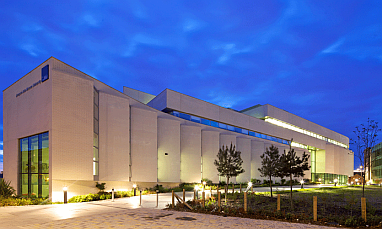Proceedings
A digital copy of the programme, including the proceedings, of the Second Neuroadaptive Technology Conference can be downloaded below.
Programme and Proceedings of the Second Neuroadaptive Technology Conference, July 16 – 18, 2019, Liverpool, UK.
All abstracts of both the 2017 and 2019 Neuroadaptive Technology Conference, along with invited full-length chapters, are published in the book Current Research in Neuroadaptive Technology. This collection is available digitally and in print from Elsevier.
Deadlines
Below are listed the most important dates and deadlines concerning the NAT’19 conference.
Contribution submission deadline
31st March, 2019
12th April, 2019
Author feedback
30th April, 2019
Early-bird registration
31st May, 2019
17th June, 2019
Conference
16-18th July, 2019
Call for Papers
We cordially invite you to submit contributions of research in the area of neuroadaptive technology.
Submissions can be made to all parts of the conference, including the Research Track, Work-In-Progress Track, and Demo Sessions.
All accepted contributions will be published in the conference proceedings, probably through Elsevier. A selection of authors will be invited after the conference to submit full book chapters about their research.
Detailed submission instructions will provided on this website in the near future.
Please feel free to share the Call for Papers (attached below) to your academic and industrial network.
File Attachment:
Submission
The template for abstract submission can be downloaded below.
All abstracts should be submitted by e-mail to the following address: n…@ipa.tu-berlin.de (click to reveal).
All accepted abstracts will be published in the conference proceedings (probably through Elsevier). A selection of authors will be invited after the conference to submit full book chapters about their research.
File Attachment:
Topics
The NAT Conference covers a broad range of topics related to: applied neurosciences/psychophysiology, signal detection, human-computer interaction, and machine learning. Specifically, the conference is designed as a forum for work related to:
Physiological computing
Passive brain-computer interfaces affective computing
Neurofeedback
Closed-loop cognition
Wearable sensors
Neuroergonomics
Ambulatory monitoring
User modelling
Personalisation
Digital health
Neurogaming
System evaluation
Mobile brain/body imaging
Robotics
Automation
Ethics/data privacy
Social interaction
Keynote Speakers
Professor Frederic Dehais (ISAE, France)
Dr. Romy Lorenz (University of Cambridge, UK)
Dr. Fabien Lotte (INRIA, France)
Dr. Graeme Moffat (Interaxon, Canada)
Dr. Erin Solovey (WPI, USA)
Programme
The full programme of the NAT’19 conference is attached below.
Venue

NAT’19 will take place in Liverpool, UK. The venue for the meeting is the John Lennon Art and Design School, which is part of Liverpool John Moores University.
The address is 2 Duckinfield St, Liverpool L3 5RD. See this address on
We have compiled a list of hotels within easy walking distance of the venue, attached below on this page. You can also search hotels in the city via visitliverpool.com. The visitliverpool website also contains lots of information about things to see and do during your stay in the city.
The closest airports to the city are Liverpool Airport or Manchester Airport
To get to the venue, you can travel by bus from Liverpool Airport to the vicinity of the conference in around an hour. From Manchester, you must take the train from the airport to Liverpool Lime Street Station, which is within walking distance of the venue. The approximate journey time from Manchester airport to Liverpool Lime Street is 60-90min and you can inspect the timetable here.
Organisation
General Chairs
Prof. Stephen Fairclough
Liverpool John Moores University, UK
Dr Thorsten O. Zander
Technische Universität Berlin, Germany
Programme Committee
Hasan Ayaz (Drexel University, USA)
Carryl Baldwin (George Mason University, USA)
Guillaume Chanel (University of Geneva, Switzerland)
Frederic Dehais (ISAE, France)
Giulio Jaccuci (University of Helsinki, Finland)
Robert Jacob (Tufts University, USA)
Peter Hancock (University of Central Florida, USA)
Pim Haselager (Donders Institute, The Netherlands)
Fabien Lotte (INRIA, France)
Christian Muehl (German Aerospace Centre, Germany)
Anton Nijholt (University of Twente, The Netherlands)
Alan Pope (NASA, USA)
Erin Solovey (Drexel University, USA)
Registration
REGISTRATION OPEN NOW!
Please register for participation through our online system.
Registration fees
Early Bird Standard (before 17th of June 2019)
GBP 260,- (conference, incl. lunch) + 50,- for the Social Evening
Standard Registration
GBP 390,- (conference, incl. lunch) + 50,- for the Social Evening
